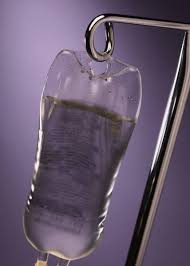I recently had the opportunity to review a facility’s medication processes, and felt a little overwhelmed. Once I broke it down, I was able to get through it pretty quickly, so I thought I would share. I worked through the processes with the facility’s pharmacy nurse, who was key to the process, and essential in keeping everything up to date.
Here’s how we did it:
1. Review your inventory. When is the last time it was updated? Is it the same as your formulary? With your next monthly expiration date check, create or update your checklist, editing any new or deleted medications, and updating stock amounts. Use the same list as your formulary. Have the assigned pharmacy oversight person review and sign off, and report the update at your next Governing Board meeting. Use the list when ordering, and if the medication requested is not on the list, get approval. Don’t forget to write the earliest expiration date, so you know when to key in for disposal. Check new arrivals for outdates and stock newest date up front to avoid having to dispose of good medication.
2. Communicate the “treat everything as a single dose rule” by having all facility staff/providers review and sign off on the CMS and CDC Single Dose guidelines.It may be time for a refresher.
3, Have the nurse assigned to manage your pharmacy or infection do a safe injection practices audit. Here is a great tool I use from the ASC Quality Collaboration website: ASC Quality toolkit. Report it to the Governing Board as part of infection control/safety minutes.
4. Are you using 222 forms for ordering narcotics? If you are using 222 forms, keep a record of the sequential numbering to account for all the forms, and indicate on the blue form when drugs are received where indicated. A 3-ring binder to hold the copies with a divider showing the sequential order range will do the trick in tracking the form numbers.
5. Do you have the Look-Alike Sound-Alike list posted? Are your medications that are listed identified? A simple sticker will do the trick. Update your policy to support the process. Here is the ISMP link to the list: Confused Name Drug List.
6. Does your crash cart have the current recommended first line response drugs? Do you have the right amounts? I used the current ACLS guidelines to make a recommended list for the Pharmacy Consultant/Medical Director approval, then updated by beefing up first line medication inventory, and retiring some 3rd line meds. As an example, we decided if it required a drip rate, chances are we wouldn’t utilize. Keeping your cart really efficient in responding to the initial emergency is key. Here is the link to the current guidelines.
7. Are you using triggering agents? If so, review your MH medications. When you do your annual training, review the MHAUS guidelines and compare with your medications and supplies, not just the Dantrolene. I like to keep MH medications and supplies in a drawer on the crash cart, so there is a one stop shop for all emergencies.
8. Update your narcotic log if needed. There may be drugs you are no longer keeping in inventory still listed, and the space on the form could be better utilized.
Once the process is complete, review as an in-service. Not only will everyone be well informed of the changes, they will understand better the “whys” to assist with continued compliance.

